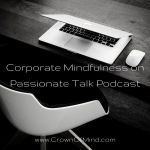Original Post: https://www.linkedin.com/pulse/career-mind-7-14-ways-leverage-portfolio-trent-rhodes/?trackingId=54aGSQngQgGYUrmzWVgEAA%3D%3D
If you think about the physical portfolio, business portfolio, artist’s portfolio, it’s the skill sample you take around housing important materials. A collection of sorts.
The portfolio website is the digital version, serving similar purpose. Enjoy the read.
The personal portfolio can be seen as an unnecessary time investment. An energy waste. Useless for creating opportunities. Other activities worth the time. My position is the portfolio is an underrated piece of digital real estate that can be used to attract opportunities and reinforce professional credibility.
When you receive feedback that it’s useless, ask your provider if they developed one and if so, how they used it. I’d lean on the view they never created one or explored how it could fit into developing a career.
Like any journey, there are multiple roads to the destination. Lacking a portfolio won’t create a doomsday scenario preventing you from realizing your career intent. But having one, and being creative with its application can help you move beyond the usual approaches on a job search and increase mobility in your craft.
They say (they who? I always ask this) doing the same thing over and over expecting a different result is a type of insanity.
If we see the masses taking the same action and experiencing the same / similar results we don’t want, the moment we wake up to this repetition is when we start to become just a bit saner.
I currently have 4 sites made to weave a universe. These sites are digital real estate with different purposes that enable me to communicate across platforms, with the purpose of reinforcing thought leadership in niches I decided to hone. Who gives permission to do this? Oneself.
The initial hurdle creators face beyond someone else saying they shouldn’t do it is self-doubt.
The portfolio serves as a way to creatively express skills and professional value without having to be there.
The domain is like a digital store where people can walk in, look around and see what they like. Some people may make a purchase (contact you to work together) while others leave, perhaps tell others about your work, but ultimately exit with a sense this creator is a well put together professional.
If you have massive self-doubt, you may be hesitant to provide content about what you do well for the world to see. Understandable at the start, but an internal obstacle to overcome so you can reap your creation’s benefits.
Give no one so much power over you that you refuse to express your value.
If you think about it, the moment you start working in a company you’re building a portfolio. It just doesn’t exist on a website.
You have work tasks, projects to complete, objectives to meet, and you fulfill them with all of the dynamics involved working with people and solo. The difference between this experience and a domain portfolio is where you track those experiences and how you present them for others to see.
Unless your work is purely confidential, you can collect work experiences and scope out the milestones in a way your portfolio visitors can relate to.
Because most people do not track and reflect on their daily work experiences this potential remains dormant.
These are 14 ways to leverage a portfolio.
1. Send your About page link or PDF version to represent your portfolio to contacts.
When you’re introducing yourself to an organization, this is useful so the reader can quickly understand what you’re about. The About page is where your bio or pitch resides. It describes your mission, interests and the skills you deliver.
This singular page can be enough to generate interest in the rest of your site. If you want to give someone just the page, you can send the direct link or a PDF page version. The webpage ideally would have your picture, and if you’re more design-oriented it could offer a video introduction.
2. Create a project section to tell skill stories.
Our world right now is more about skills than pedigree; if you can demonstrate the skills you can create more opportunities.
Thought Experiment: if you created value (especially revenue-generating) with your talent that produced impact in your domain and then pitched for a job, it’s likely the required years of experience and required bullet points will go out the window. Your creation and interview skills will be the necessary demonstration.
“Yes we had to reject that candidate even though she created an app with the skills we’re looking for that sold to this corporation. She didn’t have exactly 2 years of experience.” Unlikely.
Depending on the subject, what may take you 3 years and debt mountains in a university you could cultivate in a year with a precise learning pathway.
Future-based skills involve learning ability and knowing which skills to develop. Tech in particular is evolving towards demand for cognitive ability, creativity and collaboration with people and the technology. Skills of the soul that automation cannot touch.
The more creative you are with how you show these skills, the more range you have to attract. The fundamental method for skill demonstration is through a project, a projection, some experience where you actively initiated certain skills you’d like to present in the market.
This page in your portfolio can be shared as a link. Ideally you’re including the project stories and not just the product itself.
The product is the finish line while the story shows the journey. This link can exist in your Email signature, and when you’re communicating there may be times to introduce this link directly to people.
When you write cover letters, the projects link can take readers to your stories.
3. Own your content through a personal domain, not being shut down or lose your work if the platform goes down.
One reason why I decided against creating an entity like a Facebook group is the potential for Facebook to shut it down at will. If you have a community of 500 people and for some reason the group is deleted, you lose not just the space but all of the accumulated value that group developed.
The same with articles, designs and posts on any other social media platform including LinkedIn. A personal domain is where you can house content and have relative safety your work won’t be removed. If you share on social platforms, your personal portfolio can be the content’s original home.
Outside the domain, always have on-device copies as backup.
4. Use it to attract freelance projects.
Clients who may want to work with you will want to see some type of skill demonstration through projects or past client work.
The essential question for a client is, “I’m about to pay this person. How can I have confidence this freelancer can execute?”
This route is different from an employee approach; your resume and cover letter might be less important. These people simply want to know if you can do the work and if you can, what’s the proof.
Once you have your first client, you can add them to your portfolio along with a review and begin an upward trajectory of more opportunities.
5. Add it to your business card.
If you’re a traditional networker, it’s likely you carry business cards, the meishi. If digitally-oriented, perhaps not.
I live in both worlds and take my cards wherever I go. I’d say 1 out of every 3 outings I’m passing my card to someone. Not only is it useful to have on-hand but owning them strengthens awareness that a network conversation could occur; it’s a readiness to engage.
Instead of someone having to check their Email or your LinkedIn page to find the info (multiple steps), it’s right there on your card along with your title and contact info.
6. Add the link to your resume and cover letter.
Small step. This domain should exist in the contact info section with your documents, making it easy for readers to find. The curious reviewers will click on it and explore. Remember that it’s digital real estate; people will walk in and out of it and form impressions.
If your target customer (recruiter, reviewer) happens to experience it, they may be inclined to reach out. Remember also it’s not simply because you have a portfolio, but how you designed it and the content included there. The way it shares your offerings.
7. Use a blog post to reference in an interview.
Having a blog attached to your portfolio is an underutilized means to share thought leadership.
If you have interest in a specific domain you can passively wait for someone in it to find you or you can extend your mind out through pieces that illustrate your interest.
Each piece you post is a branch that reaches out to the kind of contacts interested in what you have to say. When they locate your post, and they resonate, it leads them back to you as the source. Your post could be video or writing. Point is it represents you.
Interested in autonomous vehicles? Write something about it and share your thoughts.
Driven to pursue topics about tech and the youth? Don’t wait to be found and write a post about why you think more attention is necessary in that area.
When you interview for employee roles these pieces can serve as talking points reinforcing your work philosophies and general interests. Potential for more resonance if you happen to interview in an industry you wrote about.
8. Short demo video of your contribution to a project, which can live on the portfolio.
A bit further outside some comfort zones, you can add video demos for your projects to your portfolio either as a page or added to your projects section. The video is a way to present communication skills related to your creations.
Video demos could be 1 to 5 minutes, saved as a private YouTube or Vimeo link or uploaded directly to your website.
If your project demos don’t involve tangible technology but perhaps reports or designs, you can still load up a Zoom, share screen and discuss your content. Imagine you have an audience with open ears and go for it.
9. Have a Contact Me section to refer people to reach out to you if accepting work.
The tab can exist in your Email signature, posts, social media bio sections, business cards if acquired, digital flyers. As a tool to expand career relationships, you want to make it easier for people to connect with you rather than play hard to get.
10. Create a video introduction to who you are in your About section.
Like the project demos providing presentations on skill demonstrations, the about section can offer a video intro for your site, your mission, goals. The link can be shared with outreach messages to support networking efforts.
11. Use a tab to present your work philosophy, industry passion, interests.
This section expands your portfolio beyond work, supporting the desire to “bring one’s whole self” to a career. Passions outside of a profession can convey transferable skills and range for visitors to connect with you. Never know who has similar interests or becomes inspired by what you present.
12. Have a recommendation or praise page where you present feedback from clients, peers, recommendations, contacts who can be a reference.
This one may take some time if you haven’t acquired recommendations. But all it takes is one to start.
One recommendation, one quote, one acknowledgement of your work or being that can be presented as further emphasis of the value you provide.
Some overcomplicate receiving statements like these. There’s no need to be a braggart or have to beg.
It works like this: if you enter collaborations with people and have a service mindset, you’ll be focused on doing your best work in unison, which will naturally inspire people to want to recommend you.
If it’s not on their minds, you can ask for it with confidence to receive a Yes.
How much value can you provide vs. how much you can take out of the experience?
Gauge value by how much you increase an interaction vs. how much you deplete it. Avoid being an energy vampire.
Small statements or full-fledged recommendations, either can be placed throughout your page to show your work was appreciated.
13. Expand project descriptions to include the full-cycle experience.
This is the project’s origin, how it was planned, key issues faced, constraints, communication in a virtual environment. It demonstrates high-level thinking about the work, also pre-answers interview questions. This link can be shared with contacts during info / outreach chat attempts.
14. Current Events or News section: can include what you’re researching.
Unless your research is proprietary, this section can aid your conversations when people are curious about what you’re working on. Project samples can also be opportunities to share with network contacts, asking for a few minutes of their time and some feedback about the concept.
There are many more portfolio applications. Explore these.
See your domain as a hub you can always refer to in networking, interviews and establishing your mark in an industry.










